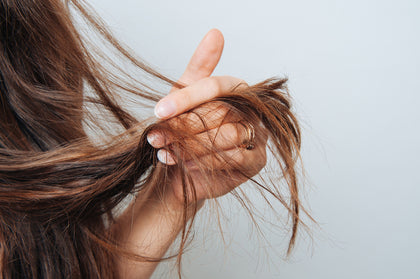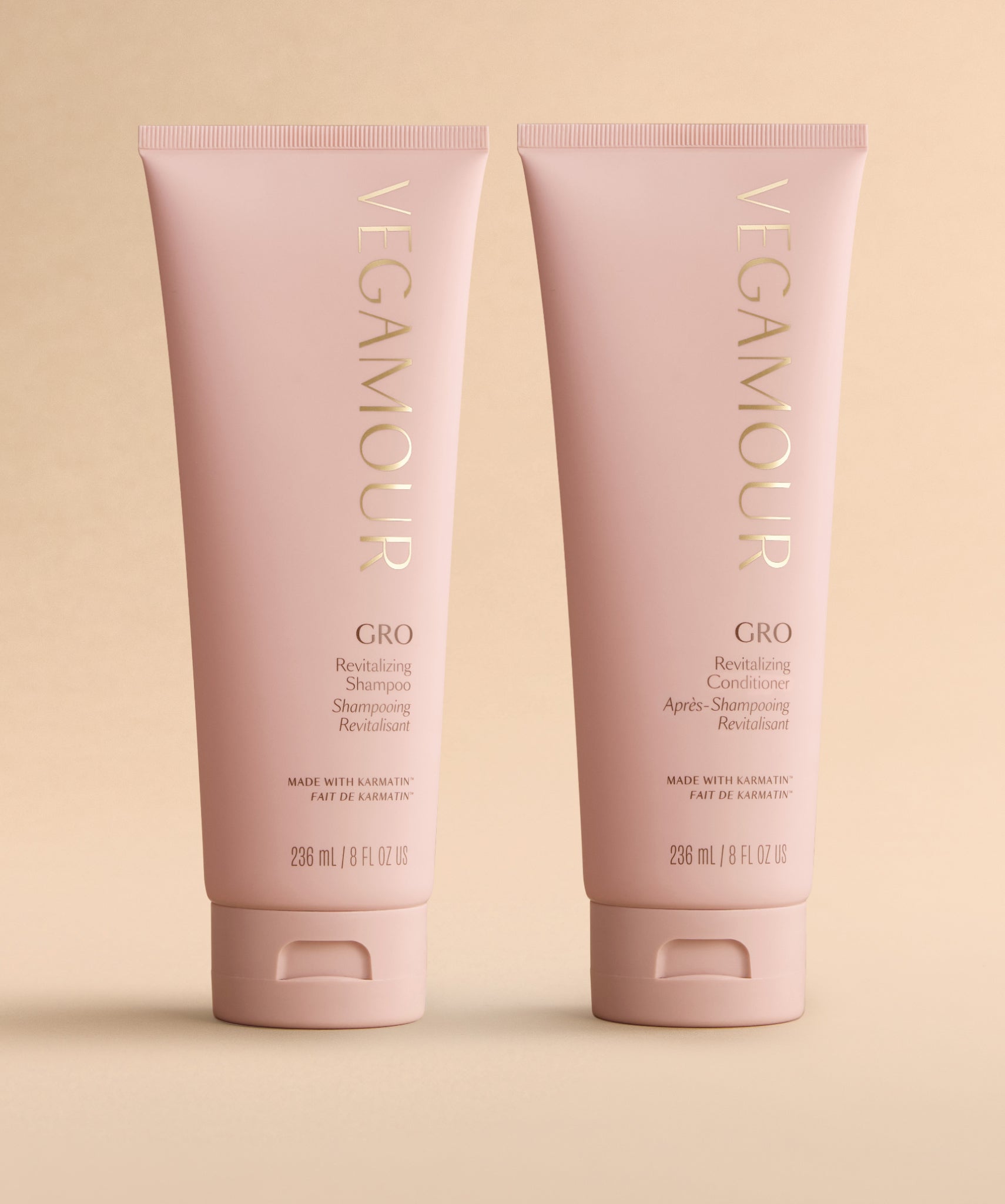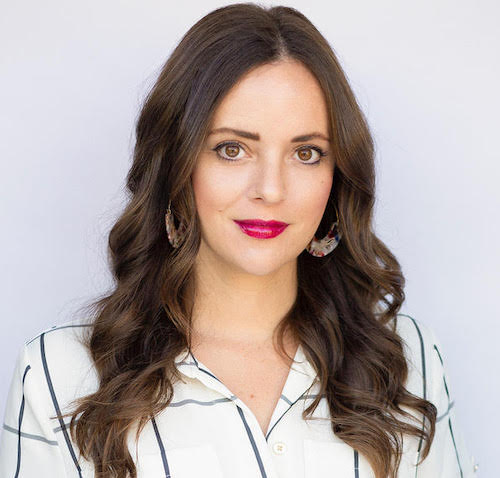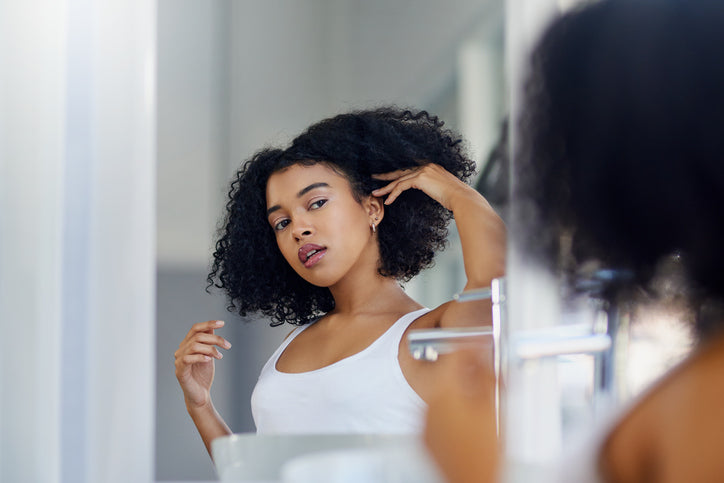If you read many articles about hair, then you may already know that it's most common for each hair follicle to grow a single hair. However, it is actually possible for two hairs, or even several hairs, to grow out of a single hair follicle. It's not something you'd usually notice unless you were plucking the hairs for some reason and noticed multiple hairs in one follicle, but it's possible that you've got them on your body right now. Learn more about how this happens, what can be done as well as the best products for nourishing your hair follicles naturally.
Here's Why You Can Have Multiple Hairs in One Follicle
It seems counterintuitive for more than one hair to grow out of a hair follicle, so in order to learn more about this phenomenon, VEGAMOUR spoke with dermatologist Dr. Anna Chacon and medical researcher Dr. Adil Maqbool to learn more.
"The condition is called as pili multigemini, where many hairs grow from the same hair follicle," said Dr. Chacon. She explained that it's normal for this to occur, but why it happens isn't totally understood.
"Papillar tips that split into several tips will result in multiple hair shafts, which typically do not recombine. On both children's scalps and adult scalps, and men's beards, this condition is fairly common."
In some cases it's believed to be genetic, but more research is needed to find out why. "Multiple hairs can grow in one follicle because the follicle is capable of producing multiple hair shafts," Dr. Maqbool said. "This is due to the production of stem cells within the follicle, which can divide and create multiple hair shafts. Additionally, follicles can go through a process called 'follicular miniaturization,' where the stem cells within the follicle begin to produce smaller and finer hairs until, eventually, multiple hairs can emerge from the same follicle."
#include-related-slider#
How This Happens
The reasons why compound hair follicles appear aren't entirely understood, but are most likely due to either a fluke or the aging process.
"Each hair in the skin is anchored by a hair follicle," Dr. Chacon said. "The hair follicle's base is formed by the hair bulb. The hair shaft is formed in the hair bulb by dividing and growing live cells. Blood vessels provide nutrients to the hair bulb's cells and supply hormones that alter hair structure and growth at various stages of life."
Dr. Maqbool explained that hair follicles are responsible for the growth and maintenance of hair, starting from the several papillae, or tiny ridges, that supply them with blood vessels. "Each follicle contains a small tube of tissue that begins at the dermal papilla and extends down into the skin," he said. "Inside the tube is a matrix of cells called the hair matrix, which is responsible for producing and maintaining the hair shaft."
Hair follicles produce a new hair strand during the anagen phase of the hair growth cycle, and this is where multiple hairs can pop up. "During this phase, cells divide rapidly and push upwards against the dermal papilla," Dr. Maqbool explained. "As the cells continue to divide, they die and form a new, longer hair shaft. The length of time each hair follicle spends in anagen is determined by genetics and varies from person to person."
With any sort of bodily function that seems strange or confusing, it's normal to wonder if there's anything wrong -- if it's a sign of some disorder or a prelude to hair loss. Dr. Chacon explained that multiple hairs growing from the same opening is nothing to worry about, but it might look different from your normal hair.
"You might have observed that a hair that appears darker or thicker than usual is actually many hairs if you've ever examined it closely. It is a cluster of hairs growing from a single follicle. The pili multigemini disease is typically neither harmful or bad for your skin or hair."
How to Prevent It
To prevent multiple hairs growing from one follicle, Dr. Maqbool explained that it is important to practice good grooming habits and take proper care of your hair. "This includes regularly washing and conditioning your hair, using a wide-toothed comb, and avoiding tight hairstyles or certain products that can damage the hair," he explained.
VEGAMOUR's GRO Full Routine Kit has everything you need to help your hair flourish from the roots all the way to the ends and will help keep those hair follicles in check.
The set includes a mix of VEGAMOUR's best-selling products (GRO Hair Serum and Biotin Gummies) as well as a few others newer to the line that feature powerful phyto-actives and proprietary Karmatin™ (the first-of-its-kind vegan keratin), which all work together to restore and strengthen your hair's health.
The GRO Scalp Detoxifying Serum cleans scalp buildup, as well as any impurities and dirt that might get in the way of your overall scalp health. Its formula contains wildcrafted botanicals and proprietary b-SILK™ protein to help restore your scalp's natural balance. It also helps you avoid unhealthy bacteria by providing a semi-permeable barrier that also locks in moisture and helps to protect the scalp from environmental pollutants.
On your wash days, GRO Revitalizing Shampoo and Conditioner are gentle, sulfate-free, color-safe and clean. This duo contains microencapsulated vegan b-SILK™ proteins that physically bond to hair follicles and remain attached to strands even after rinsing. These nourishing formulas are naturally sourced and contain no harmful additives. Enriched with the nourishing and hydrating properties of wild harvested marula oil, organic murumuru butter and ximenia oil, the conditioner helps to smooth, hydrate and fight damaging free radicals without imparting pore-blocking residue on the skin surface, which helps keep your hair follicles happy.
How to Safely Remove Pili Multigemini
If you see multiple hairs in one follicle somewhere on your body where it's undesirable, there is a way to safely remove them. "Pili multigemini can be completely removed with electrolysis," Dr. Chacon said. "It has been proposed that symptomatic pili multigemini can be improved with depilatory laser therapy."
Dr. Maqbool explained that it's best to avoid pulling out hairs, as this can cause trauma to the hair follicle. "If multiple hairs are still present [after removing the hair cluster from the follicle,] it is best to seek the advice of a dermatologist or trichologist for removal," he said. "They will be able to advise on the safest method for removal, which may be a combination of tweezing and laser hair removal."
While it's possible to pluck hairs out of your body, the follicle doesn't come with it. So if the follicle is growing the multiple hairs, they'll continue to grow back. "A hair follicle cannot be pulled out since it is a structure within your skin that houses your hair," Dr. Chacon explained.
The Takeaway
It's a common misconception that each hair follicle grows only one hair. In fact, it's more common than you might think. The exact reason why a small proportion of follicles do this isn't fully understood yet. Whether having multiple hairs in one follicle bothers you or not, it's important to keep your hair follicles happy so that your hair can remain healthy. It's important to use quality products that will nourish your hair follicles and your hair strands every time you wash your hair.
More from VEGAMOUR:
- This is the Best Shampoo and Conditioner for Dry Hair
- Why Hair Fillers Are the Latest Trend
- How to Make Gray Hair Look Shiny and Silver
Photo credit: Cristalov/iStock
Back




















